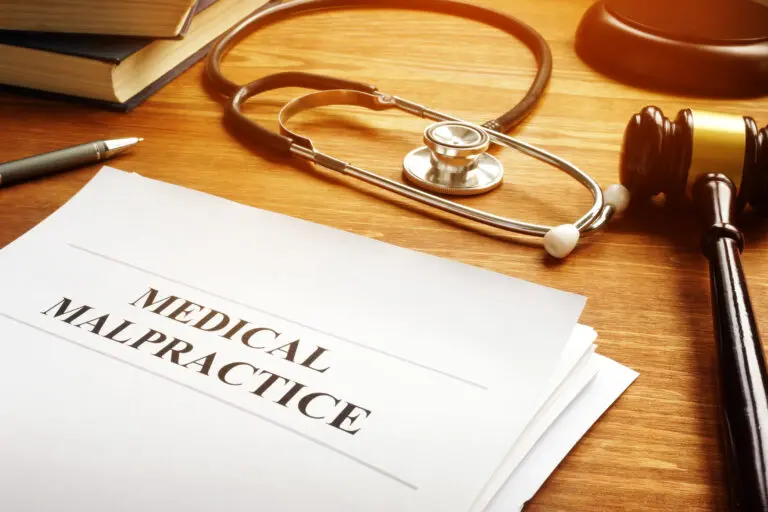In today’s competitive business landscape, protecting your company’s intellectual property is crucial for maintaining a strong brand identity and market position. One of the most valuable assets a business can have is its trademark. A marca registrada is a distinctive sign, symbol, word, or combination thereof that identifies and distinguishes your products or services from those of other businesses. Safeguarding your trademark is essential to prevent others from using similar marks that could confuse consumers or dilute your brand’s reputation. This article will explore comprehensive strategies and legal considerations for protecting your business’s trademark effectively.
The first step in protecting your business’s trademark is to ensure it’s properly registered. Trademark registration provides legal recognition of your exclusive right to use the mark in connection with your goods or services. While common law rights can offer some protection based on use alone, federal registration with the United States Patent and Trademark Office (USPTO) provides significant advantages. These benefits include nationwide protection, the ability to use the ® symbol, and a legal presumption of ownership.
Before filing for registration, it’s crucial to conduct a thorough trademark search to ensure your desired mark isn’t already in use or registered by another entity. This search should cover not only identical marks but also similar ones that could potentially cause confusion. Many businesses opt to work with a trademark attorney to perform a comprehensive search and navigate the registration process.
Once you’ve confirmed your trademark’s availability, the next step is to file an application with the USPTO. The application process requires detailed information about your mark, including its appearance, the goods or services it will represent, and evidence of its use in commerce (or intent to use). After filing, your application will undergo examination by a USPTO attorney who will review it for compliance with legal requirements and potential conflicts with existing marks.
Assuming your application is approved, your trademark will be published in the Official Gazette, allowing others to oppose its registration if they believe it conflicts with their rights. If no opposition is filed or successfully overcome, your trademark will be registered, granting you exclusive rights to use it nationwide for the specified goods or services.
However, obtaining registration is just the beginning of trademark protection. Ongoing vigilance is necessary to maintain and enforce your rights. This includes monitoring the marketplace for potential infringement and taking action against unauthorized use of your mark or similar marks that could cause confusion.
One effective way to monitor for potential infringement is to set up trademark watch services. These services scan new trademark applications, domain name registrations, and online marketplaces for signs that someone might be using a mark similar to yours. Early detection of potential conflicts allows you to address issues before they escalate into more serious problems.
When you do discover potential infringement, it’s important to act swiftly and decisively. Often, the first step is to send a cease and desist letter to the infringing party, demanding they stop using the conflicting mark. This letter should clearly state your trademark rights, explain how the other party’s use infringes on those rights, and outline the actions you expect them to take.
If a cease and desist letter doesn’t resolve the issue, you may need to consider more formal legal action. This could include filing a trademark infringement lawsuit in federal court or initiating proceedings with the Trademark Trial and Appeal Board (TTAB) if the conflict involves a pending trademark application or registered mark.
In addition to monitoring and enforcement, maintaining your trademark registration is crucial. The USPTO requires periodic filings to keep your registration active. Between the 5th and 6th year after registration, you must file a Declaration of Use or Excusable Nonuse. Between the 9th and 10th year, and every 10 years thereafter, you must file a Combined Declaration of Use and Application for Renewal. Failing to file these maintenance documents can result in the cancellation of your registration.
Another important aspect of trademark protection is proper usage. Consistently using your mark as an adjective rather than a noun or verb helps maintain its distinctiveness and prevent it from becoming generic. For example, you would say “KLEENEX tissues” rather than just “Kleenex” to describe the product. Similarly, using appropriate trademark symbols (™ for unregistered marks, ® for registered marks) helps put others on notice of your claimed rights.
Expanding your trademark protection internationally is also worth considering, especially if your business operates in or plans to enter foreign markets. While U.S. trademark registration provides protection within the United States, it doesn’t extend to other countries. The Madrid Protocol offers a streamlined process for filing trademark applications in multiple countries, but it’s important to note that trademark rights and registration requirements can vary significantly from country to country.
In the digital age, protecting your trademark online is increasingly important. This includes registering relevant domain names, monitoring social media platforms for unauthorized use of your mark, and addressing counterfeit products sold on e-commerce sites. Many online platforms have specific procedures for reporting trademark infringement, and taking advantage of these can help protect your brand in the digital marketplace.
As your business grows and evolves, you may develop new products, services, or brand extensions. It’s important to consider whether these new offerings require additional trademark protection. Filing new applications or updating existing registrations to cover new goods or services can help ensure comprehensive protection for your brand portfolio.
Educating your employees about the importance of trademark protection is also crucial. Implementing clear guidelines for how your trademarks should be used in marketing materials, product packaging, and other communications can help maintain consistency and protect your brand’s integrity.
While trademark protection is primarily about safeguarding your own rights, it’s equally important to respect the trademark rights of others. Conducting clearance searches before adopting new marks or entering new markets can help avoid potential conflicts and costly legal disputes.
In some cases, you may encounter situations where another party is using a similar mark, but in a different industry or geographic area. In such cases, it may be possible to coexist through a trademark coexistence agreement. These agreements outline how each party can use their respective marks to avoid confusion in the marketplace.
For businesses with multiple related brands or product lines, developing a comprehensive trademark portfolio strategy is essential. This involves considering how different marks relate to each other, which marks are most important to protect, and how to allocate resources for trademark protection and enforcement effectively.
As technology evolves, new challenges in trademark protection emerge. For example, the rise of non-fungible tokens (NFTs) and virtual goods in the metaverse has raised questions about how traditional trademark rights apply in these new digital contexts. Staying informed about these developments and adapting your trademark strategy accordingly is crucial for maintaining robust protection in an ever-changing landscape.
Another emerging area of concern is the use of trademarks in artificial intelligence and machine learning applications. As AI systems become more sophisticated, issues may arise regarding the use of trademarks in training data, AI-generated content, or AI-powered search and recommendation systems. Understanding how these technologies interact with trademark law can help businesses navigate potential risks and opportunities.
Trademark dilution is another concept that businesses, particularly those with famous marks, should be aware of. Dilution occurs when the use of a similar mark, even on dissimilar goods or services, weakens the distinctive quality of a famous mark. The Federal Trademark Dilution Act provides additional protection for famous marks against dilution, allowing owners to take action even in the absence of likelihood of confusion or competition.
For businesses operating in regulated industries, such as pharmaceuticals or financial services, there may be additional considerations for trademark protection. These industries often have specific requirements or restrictions on branding and marketing that can impact trademark strategy. Working with legal counsel familiar with both trademark law and industry-specific regulations is crucial in these cases.
In some situations, businesses may find it beneficial to license their trademarks to other parties. Trademark licensing can be a valuable way to expand brand reach and generate additional revenue. However, it’s critical to maintain control over the quality of goods or services offered under the licensed mark to preserve its integrity and prevent abandonment. Well-drafted licensing agreements that include quality control provisions are essential for successful trademark licensing arrangements.
As sustainability and corporate social responsibility become increasingly important to consumers, some businesses are exploring ways to incorporate these values into their trademark strategies. This might include developing and protecting marks specifically for eco-friendly product lines or implementing programs to combat counterfeiting and promote ethical business practices throughout the supply chain.
In the event of a dispute over trademark rights, alternative dispute resolution methods such as mediation or arbitration can sometimes offer a more cost-effective and efficient solution than traditional litigation. Many businesses include arbitration clauses in their trademark agreements to provide a structured process for resolving conflicts outside of court.
For businesses operating in multiple countries, it’s important to be aware of the territorial nature of trademark rights. A mark that is protected in one country may not have the same level of protection in another. This can lead to complex situations where a business has strong rights in some markets but faces challenges in others. Developing a global trademark strategy that takes into account the specific legal and business considerations of each relevant market is crucial for international businesses.
The intersection of trademark law with other areas of intellectual property, such as copyright and design rights, can sometimes create overlapping protections or conflicts. For example, a logo might be protectable both as a trademark and as a copyrighted work. Understanding how these different forms of intellectual property interact can help businesses develop more comprehensive protection strategies.
As the business landscape continues to evolve, new forms of branding and marketing emerge, presenting both opportunities and challenges for trademark protection. From influencer marketing to augmented reality experiences, businesses need to consider how their trademarks are used and protected in these new contexts. Staying informed about emerging trends and adapting trademark strategies accordingly is crucial for maintaining strong brand protection in a rapidly changing environment.
In conclusion, protecting your business’s trademark requires a multifaceted approach that combines legal registration, ongoing monitoring and enforcement, proper usage, and strategic planning. By implementing a comprehensive trademark protection strategy, businesses can safeguard their brand identity, maintain their competitive edge, and build long-term value in their intellectual property assets. As the business and legal landscapes continue to evolve, staying informed and adaptable in your approach to trademark protection will be key to ensuring your brand remains strong and protected in the face of new challenges and opportunities.
Fuentes:
- https://www.uspto.gov/trademarks/basics
- https://www.wipo.int/trademarks/en/
- https://www.nolo.com/legal-encyclopedia/trademark-law
- https://www.worldtrademarkreview.com/
- https://www.ipos.gov.sg/understanding-innovation-ip/trademark
- https://euipo.europa.eu/ohimportal/en/trade-marks
- https://www.gov.uk/topic/intellectual-property/trade-marks
Citations:
[1] https://www.lodhs.com/blog/defend-your-trademark-or-you-could-lose-it/
[2] https://www.pv.eu/services/trademarks/6-tips-on-trademark-strategy/
[3] https://clarivate.com/intellectual-property/blog/special-report-trademark-filing-and-litigation-trends-2024-insights-and-opportunities/
[4] https://www.gtlaw.com/en/insights/2023/12/published-articles/5-trends-to-watch-2024-trademark-and-brand-management
[5] https://www.wipo.int/web/trademarks/protection
[6] https://www.novagraaf.com/en/insights/trademark-enforcement-strategies-brand-owners
[7] https://www.digip.com/blog/post/5-key-ways-to-protect-your-registered-trademark









